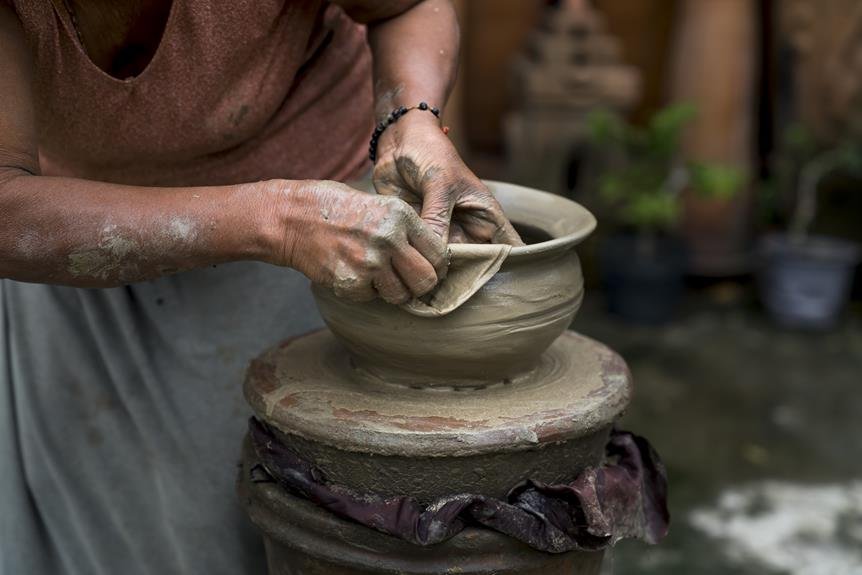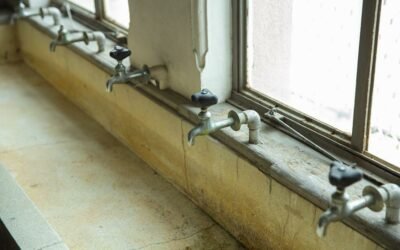Are you pregnant and concerned about the potential risks of mold exposure? Do you wonder if mold can cross the placenta and affect your baby's development?
In this article, we will explore the functions of the placenta, the dangers of mold exposure during pregnancy, and whether or not mold can pass through the placenta.
By understanding the risks and taking necessary precautions, you can protect yourself and your baby from the potential harm of mold during this critical time.
Key Takeaways
- Mold exposure during pregnancy may increase the risk of certain complications.
- Studies suggest that mold spores and mycotoxins can pass through the placental barrier.
- Inhalation of mold spores during pregnancy can lead to mold presence in the placenta and fetal tissues.
- Further research is needed to fully understand the extent of mold's ability to cross the placenta.
The Placenta and Its Functions
Your placenta plays a crucial role in supporting the growth and development of your baby. This remarkable organ attaches to the lining of your uterus and acts as a lifeline, providing your baby with oxygen, nutrients, and antibodies while also removing waste products.
The placenta acts as a barrier, protecting your baby from harmful substances, such as bacteria and certain medications, that may be present in your bloodstream. It also helps regulate the levels of hormones in your body, ensuring the proper functioning of your pregnancy.
Through a complex network of blood vessels, your placenta allows for the exchange of gases, nutrients, and waste products between you and your baby. It's through this intricate system that your baby receives everything it needs to grow and develop during the nine months of pregnancy.
Without a healthy and fully functioning placenta, the growth and development of your baby could be compromised. Therefore, it's essential to take good care of your placenta by maintaining a healthy lifestyle, attending regular prenatal check-ups, and following your healthcare provider's advice.
Understanding Mold Exposure
To understand mold exposure during pregnancy, it's important to be aware of the potential risks and how it can affect both you and your baby.
Mold is a type of fungus that can grow in damp and humid environments, such as bathrooms, basements, and areas with water damage. When you're exposed to mold, you may inhale mold spores or come into contact with them through your skin. These spores can cause respiratory symptoms like coughing, wheezing, and nasal congestion. In some cases, mold exposure can lead to allergic reactions or exacerbate existing allergies or asthma.
During pregnancy, the risks associated with mold exposure may be heightened. Some studies suggest that exposure to mold during pregnancy may increase the risk of certain complications, such as preterm birth, low birth weight, and respiratory problems in newborns. However, it's important to note that more research is needed to fully understand the effects of mold exposure on pregnancy outcomes.
To minimize the risk of mold exposure during pregnancy, it's important to maintain a clean and dry living environment. Keep areas prone to moisture, such as bathrooms and kitchens, well-ventilated. Fix any leaks or water damage promptly and consider using a dehumidifier in damp areas. If you suspect mold growth in your home, it's recommended to seek professional help for proper removal and remediation. It's also advised to consult with your healthcare provider if you have concerns about potential mold exposure during pregnancy.
Potential Risks of Mold During Pregnancy
One potential risk of mold during pregnancy is an increased likelihood of respiratory problems in newborns. Exposure to mold during pregnancy has been linked to an increased risk of respiratory issues such as asthma, wheezing, and respiratory infections in infants. The table below summarizes the potential risks of mold during pregnancy and their effects on newborns.
| Potential Risks of Mold During Pregnancy | Effects on Newborns |
|---|---|
| Increased risk of respiratory problems | Asthma, wheezing, respiratory infections |
| Allergic reactions | Skin rashes, itchy eyes, nasal congestion |
| Increased risk of preterm birth | Premature delivery, low birth weight |
| Developmental issues | Neurological and cognitive impairments |
| Increased risk of allergies | Allergic rhinitis, allergic asthma |
It is important for pregnant women to be aware of the potential risks associated with mold exposure and take necessary precautions to minimize their exposure. This includes keeping the home clean and dry, repairing any leaks or water damage promptly, and using proper ventilation in areas prone to moisture, such as bathrooms and kitchens. If mold is present, it is recommended to seek professional help for its removal to ensure the safety and well-being of both the mother and the developing baby.
Can Mold Cross the Placenta
Mold can potentially cross the placenta, posing risks to the developing fetus during pregnancy. While the exact mechanisms of how mold crosses the placenta aren't fully understood, studies suggest that it's possible for mold spores and mycotoxins to pass through the placental barrier.
Research has shown that mold exposure during pregnancy can lead to adverse outcomes for both the mother and the fetus. Exposure to mold has been associated with an increased risk of preterm birth, low birth weight, and developmental abnormalities. These risks are particularly concerning because the developing fetus is highly vulnerable to environmental insults.
One study conducted on mice found that inhalation of mold spores during pregnancy resulted in the presence of mold in the placenta and various fetal tissues. The study also showed that mold exposure led to fetal growth restriction and impaired fetal development.
Although these findings are compelling, it's important to note that further research is needed to fully understand the extent of mold's ability to cross the placenta and the potential risks it poses to the developing fetus. Pregnant individuals should take precautions to minimize exposure to mold, such as keeping indoor spaces well-ventilated, controlling humidity levels, and promptly addressing any water damage or moisture issues in their homes.
Protecting Yourself and Your Baby From Mold Exposure
Protect yourself and your baby from mold exposure by taking proactive measures to create a safe and healthy environment during pregnancy. Mold exposure can pose potential risks to both you and your developing baby, so it's important to be vigilant in preventing and minimizing exposure.
Here are four key steps you can take:
- Keep your living space clean and dry: Regularly clean and vacuum your home to remove any mold spores that may have settled. Pay special attention to areas prone to moisture, such as bathrooms and kitchens. Ensure proper ventilation and promptly fix any water leaks or dampness issues.
- Control humidity levels: Mold thrives in damp environments, so it's crucial to maintain optimal humidity levels in your home. Use dehumidifiers in areas that tend to be more humid, like basements or laundry rooms. Aim for a humidity level below 50% to discourage mold growth.
- Use mold-resistant materials: When renovating or decorating your home, opt for mold-resistant materials such as mold-resistant drywall, paints, and insulation. These materials can help prevent mold growth and make it easier to clean and maintain a mold-free environment.
- Be cautious when outdoors: Mold spores are present in the outdoor environment as well. Avoid spending time in heavily wooded or damp areas, especially during high humidity or rainy days. If you do spend time outdoors, change your clothes and wash them immediately to minimize the chances of bringing mold spores indoors.
Conclusion
In conclusion, while mold exposure during pregnancy can pose potential risks, there's currently no evidence to suggest that mold can cross the placenta. The placenta acts as a protective barrier, filtering out harmful substances and preventing direct contact between the mother and fetus.
However, it's important for pregnant individuals to take necessary precautions to minimize mold exposure and maintain a healthy environment for themselves and their baby.






0 Comments